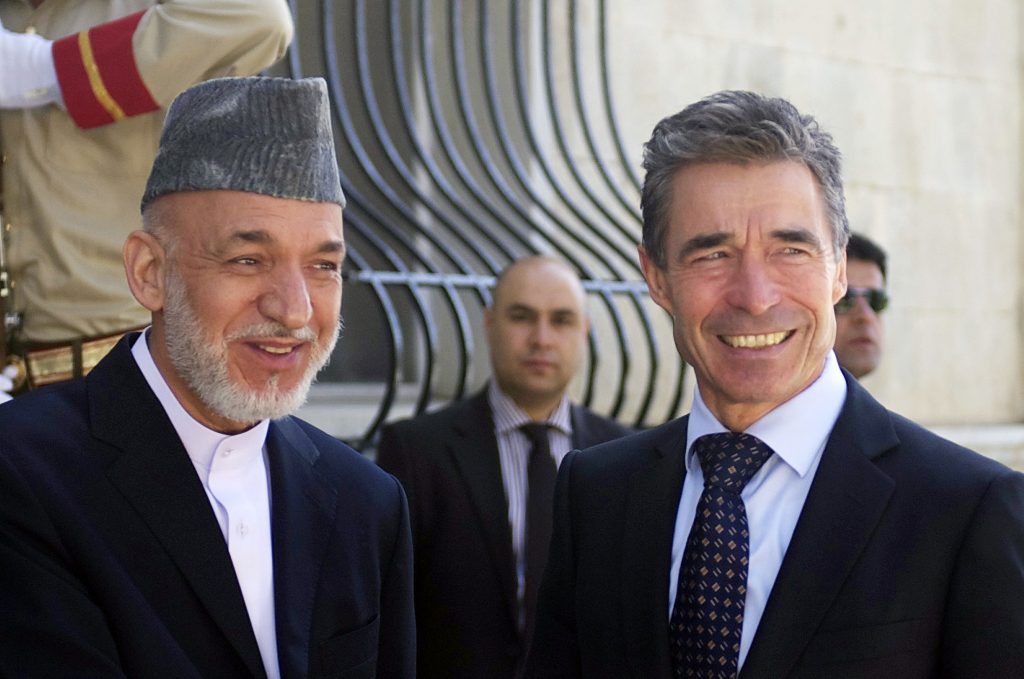
From Tim Craig, Washington Post: The U.S.-led international coalition and Afghanistan President Hamid Karzai announced Tuesday that Afghan troops are now taking the lead on security in every province of the country, a milestone that was quickly marred by a new fatal attack in the capital.
At a formal ceremony at an Afghan military training camp on the outskirts of Kabul, Karzai and NATO Secretary General Anders Fogh Rasmussen told hundreds of military leaders and diplomats that the hand-off sets the stage for the bulk of coalition of forces to leave Afghanistan by the end of the next year.
“Our country is in the process of a historic event, and from now on, always, all the security responsibility will be conducted and performed by our forces, and will be led by our own forces,” Karzai said.
The event marking the transfer of the remaining security districts, most of which are near the country’s volatile border with Pakistan, had been kept a closely guarded secret due to security concerns. Officials said it took days to secure the venue, at one of Afghanistan’s premiere military academies. Reporters were flown in by military helicopter.
Though the transfer ceremony was not itself attacked, as some officials had feared, a bomb exploded near the Afghan parliament building an hour before Karzai and Rasmussen spoke. The bomb, apparently detonated by remote control, targeted a high-profile Shiite member of parliament, Mohammad Mohaqia. Mohaqia survived, but three others were killed and 30 people were wounded, authorities said.
The explosion reinforced the unease many Afghans feel as the U.S. military footprint continues to contract in their country amid a wave of attacks by the Taliban. At a news conference after the transfer ceremony, Karzai said he’s preparing to become engaged in preliminary peace talks with the militant group.
From Dylan Welch and Hamid Shalizi, Reuters: Dubbed "milestone 2013" by NATO, the handover will culminate in the departure of all NATO troops serving in Afghanistan under the International Security Assistance Force (ISAF) force at the end of 2014.
Afghan security forces have been rapidly built up by the international coalition, from about 40,000 in 2009 to 352,000 in February this year.
The transfer of security responsibility began in July 2011 with a handover by ISAF of the country’s most peaceful province, Bamiyan.
There have been three further rounds since, taking to 87 percent by last December the proportion of the Afghan population protected by the Afghan state.
Tuesday’s tranche comprises restive eastern and southeastern provinces bordering Pakistan. These include Helmand, Kandahar, Paktika, Paktia, Khost, Nangarhar, Kunar, Laghman, Logar and Nuristan.
Fatalities among the Afghan security forces show how soon they have been expected to take the burden of the Afghan war. In one year, the Afghan state has lost more troops than NATO has across the entire war. (photo: NATO)
Image: nato%206%2018%2013%20karzai.jpg
